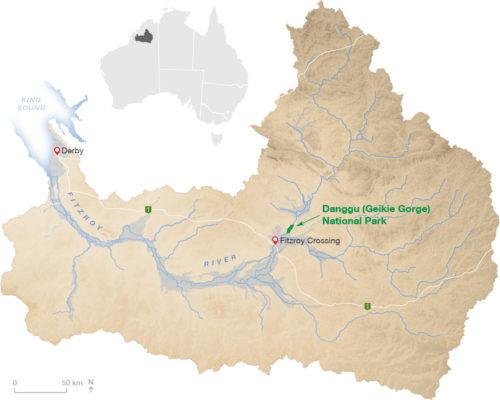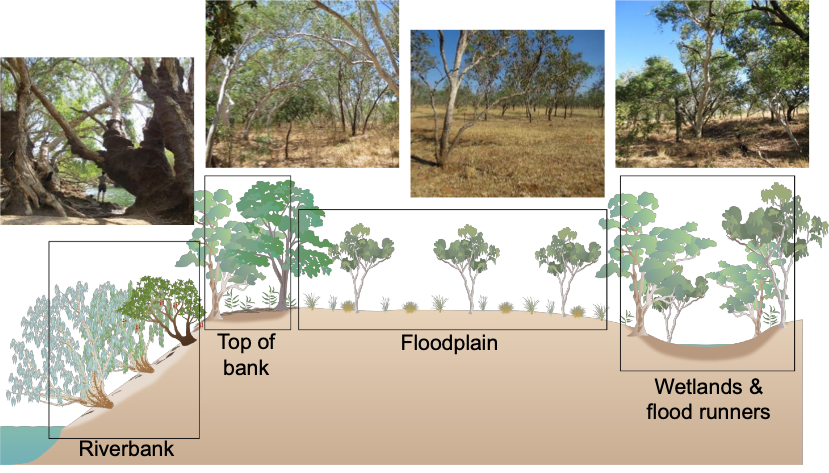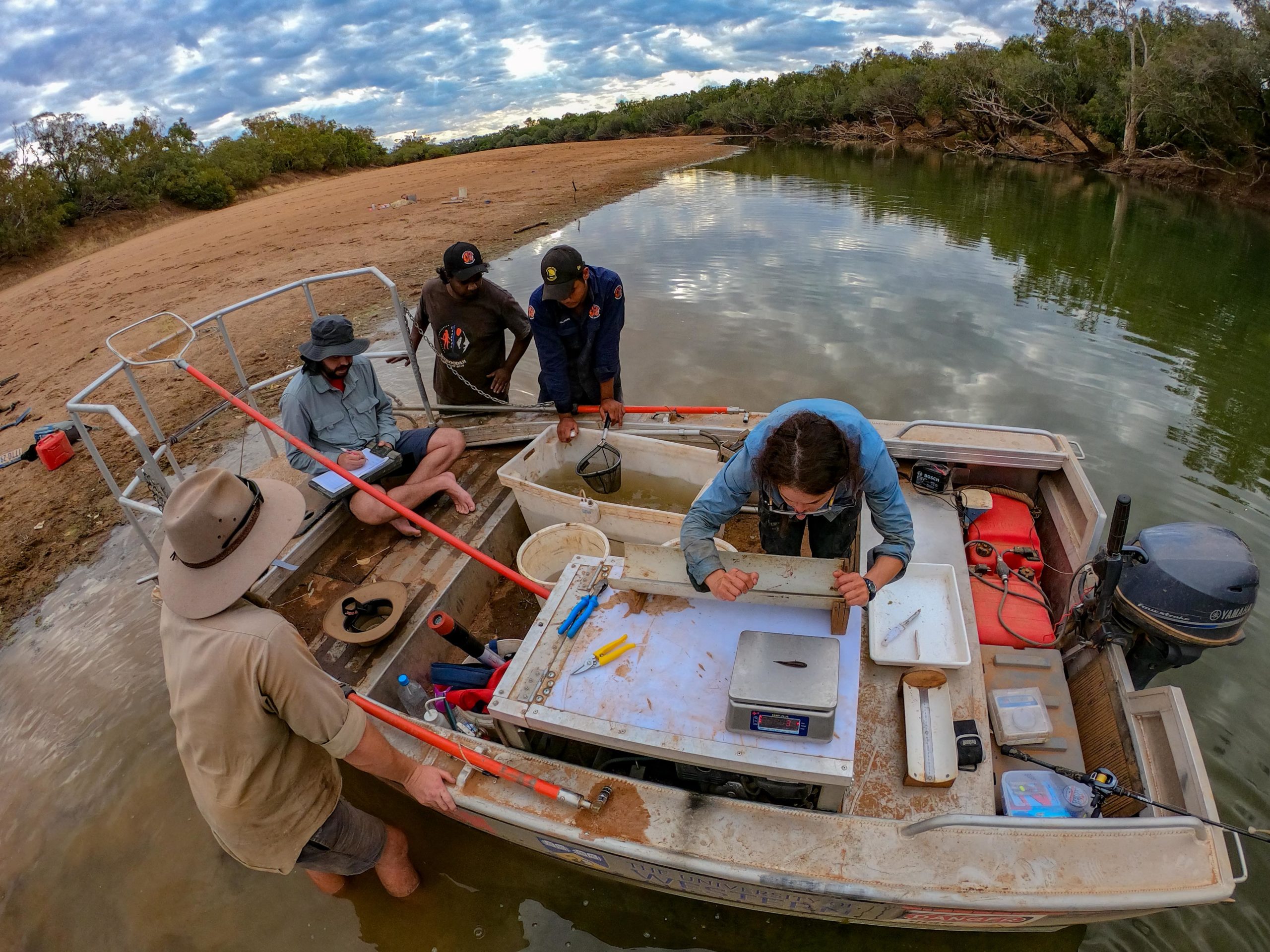27 July 2022
Authors: Jane Thomas and Michael Douglas, Northern Australia Environmental Resources Hub, National Environmental Science Program
Part of the West Kimberley National Heritage Place, the mighty Martuwarra (Fitzroy River) in Western Australia sustains rich biodiversity, ecosystems and Indigenous cultures. This largely free-flowing river has recently been identified as suitable for potential water-resource development to support the expansion of irrigated agriculture in the catchment.

The Martuwarra/Fitzroy River in Western Australia’s Kimberley region. Map: Northern Australia Environmental Resources Hub.
Plants and animals that inhabit the Fitzroy River and its expansive floodplains and wetlands rely on water flows in both the wet and dry seasons to survive and thrive. It’s vitally important to understand these environmental water needs so that decision-makers can design water policies to ensure that any plans for water extraction protect the flows that sustain the Fitzroy’s extraordinary biodiversity. However, previous research on the environmental water needs of the Fitzroy is scarce.
In partnership with Traditional Owners and Indigenous rangers, a research project led by scientists at The University of Western Australia and Griffith University has boosted the ecological knowledge of the water needs of key plants and animals of the Fitzroy.
We now know the areas and species of riparian (riverbank) trees that are most vulnerable to water extraction. The silver-leaved paperbark (Melaleuca argentea), weeping paperbark (M. leucadendra), freshwater mangrove (Barringtonia acutangula) and Leichhardt pine (Nauclea orientalis) are the tree species most likely to be impacted by water extraction and so may be good candidates for monitoring to assess environmental impacts. These species also use groundwater in the dry season in places where it is available.
Fitzroy River flows help fish to disperse across the landscape, into flood-runner pools that only fill up with water when the river runs high. At the very base of the food web, algal biofilm – a green film that covers sand and logs in shallow runs and riffles and is an important food source for some fish – needs slower water flows to thrive, meaning that water extraction during the dry season could cause it to dry up altogether. While fork-tailed catfish – a highly valued food source for Indigenous people in the catchment – are fatter and in better condition during the dry season if the previous wet season was strong.

A representation of the zonation of riparian woody plants, including photographs representative of each zone. Image: Northern Australia Environmental Resources Hub.
This and other knowledge gained from this research have been used to develop conceptual models which can be used to guide management decision-making and policy development for the mighty Martuwarra.
This research project has generated new knowledge on the environmental water needs of key plants and animals of the Fitzroy to better inform water planning.
This project was led by Professor Michael Douglas of The University of Western Australia and is supported through funding from the Australian Government’s National Environmental Science Program through its Northern Australia Environmental Resources Hub.

Researchers Leah Beesley, Chris Keogh and PhD student Thiaggo de Castro Tayer sampling fish and algae in collaboration with Yimardoo-Warra Rangers Jeremiah Green and Shaquille Millindee. Photo: Michael Douglas.
Want to know more about the Resilient Landscapes Hub's activities and our research into practical solutions to environmental problems? Stay informed about activities, research, publications, events and more through the Hub newsletter.